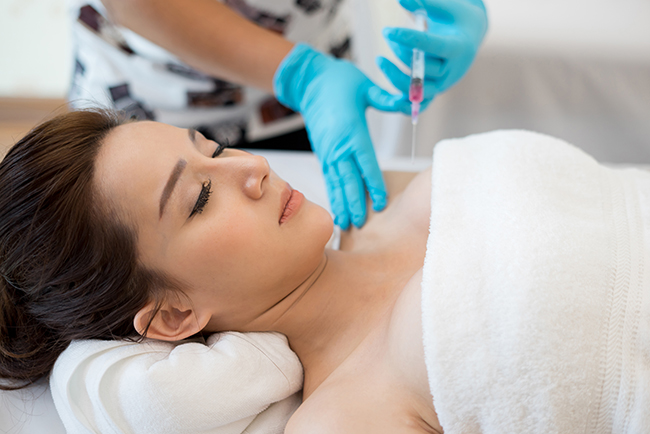If you are considering a breast augmentation procedure with breast implants, chances are you already know that there is a risk of breast implant rupture. While today’s breast implants are designed to last much longer than implants of the past, they are not meant to last forever, and the risk of rupture increases every year. But what is the breast implant rupture rate and what are breast implant rupture symptoms? To better understand your risks, we take a closer look at breast implant ruptures, common causes, and what symptoms to look out for.
How Long Should Breast Implants Last?
On average, the implants used in breast augmentations today, whether saline or silicone, are designed to last for more than 10 years. However, with each year that passes, the risk of rupture increases by one percent. While the majority of breast implants can remain in good shape and stable for more than 20 years, research shows that, in the United States, the breast implant rupture rates range from 1.1% to 17.7 percent at six to 10 years after initial breast augmentation, with saline implants being more likely to rupture earlier. However, a saline rupture is much easier to diagnose and safer when they do rupture.
What Is a Breast Implant Rupture?
All breast implants, whether saline or silicone, have an outer shell that, over time, can develop a tear or hole, causing the inside material to leak out. This is known as a rupture. With saline implants, you also have the risk of a valve failure that can cause your implant to slowly leak over time or rupture completely.
When a saline implant ruptures, the implant loses shape over a few days, resulting in a deflation of the breast. The body is able to absorb the saline, leaving behind the empty shell. Silicone implants are slightly different and when a rupture occurs, you may not even notice. This is because the leaked silicone moves slowly and often remains trapped in the surrounding tissue. This is where the term “silent rupture” comes from. When this occurs, the tissue can become irritated, additional scar tissue may begin to form, and you may notice changes to the shape of your breasts as well as pain or discomfort.
Common Causes of Breast Implant Ruptures
Implant rupture can happen due to a variety of reasons, including normal aging. Some common causes of breast implant rupture include:
- Capsular contracture, or the development of scar tissue around the implant that hardens or tightens around the implant or affects the valve in a saline implant
- Direct trauma or impact to the breast implant, such as a car accident
- Surgical error or implant valve malfunction in saline implants
- Accidental needle insertion during a biopsy
- Too much handling during surgery weakened the implant shell
- Overfilling or underfilling of a saline implant
Symptoms of a Breast Implant Rupture
If you have saline breast implants, you are more likely to notice a rupture right away. Because the body absorbs the saline, you will experience a decrease in breast size over the course of a few days to months, depending on the size of the tear or if you have a slow valve leak. Other potential rupture symptoms can include:
- Knots forming in the breast or the breast becoming hard due to capsular contracture
- Uneven breast appearance
- Pain or tenderness in the breast
- Breast swelling
- Numbness, tingling, or changes in sensation in the breast
- Lumps forming in the chest, armpit, arm, or abdomen as silicone gel migrates in the body
Because a silicone rupture often comes with little to no symptoms, the FDA recommends that you receive an ultrasound or MRI of your breasts five to six years after your breast augmentation and every two to three years thereafter in order to detect silent ruptures.
What To Do If You Suspect a Rupture
If you suspect a breast implant rupture, it is important to contact your surgeon immediately. If a rupture has occurred, the affected implant must be removed. If your implants are over 10 years old, your surgeon may recommend removing the other implant at the same time. Before removal, you can decide if you want to replace the breast implants, have a breast lift, or other revision option. Delaying the removal of a ruptured implant can cause the pocket or capsule around the implant to shrink. This can make removal and replacement difficult as well as increase the risk of breast asymmetry and discomfort.


